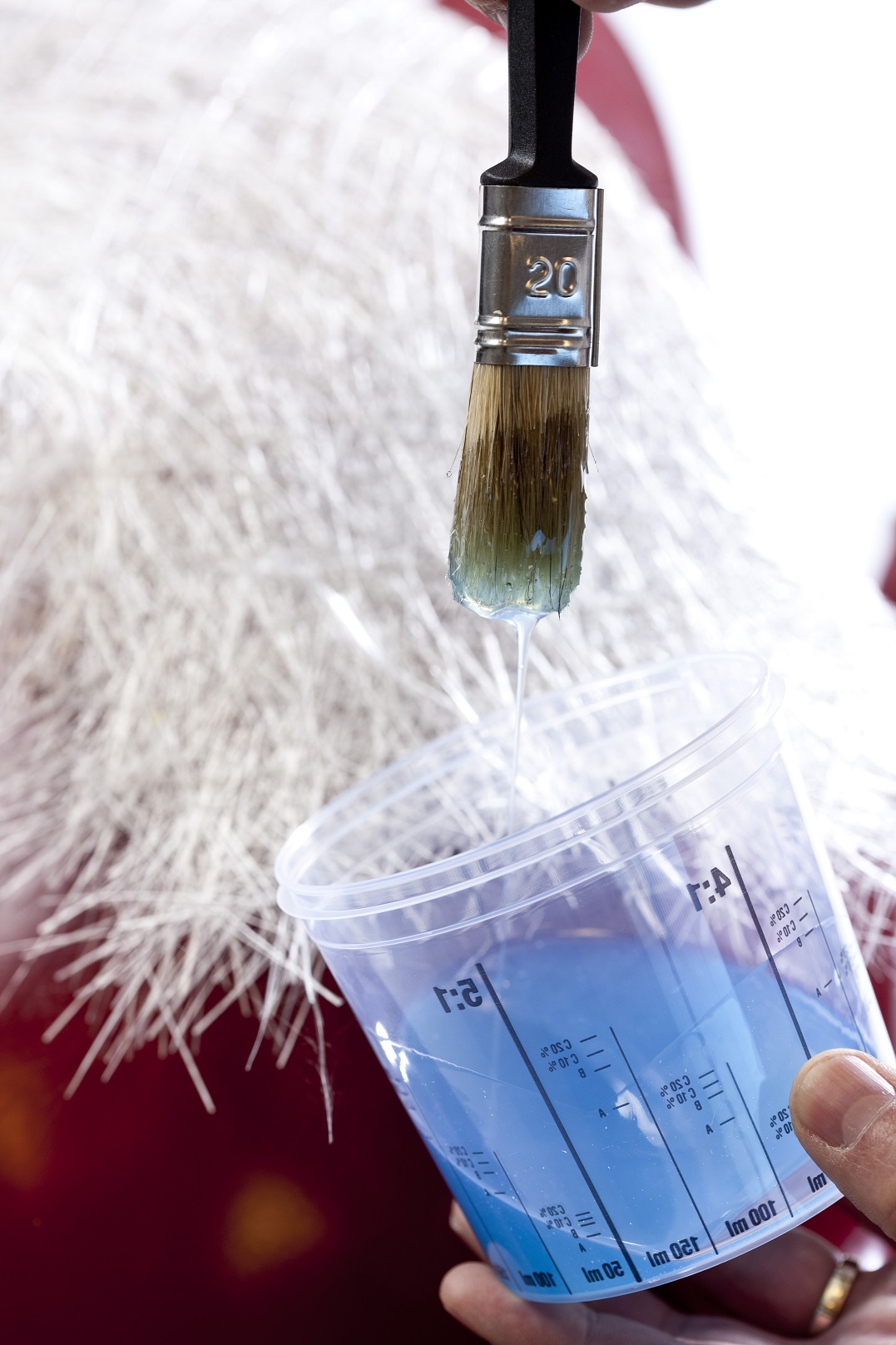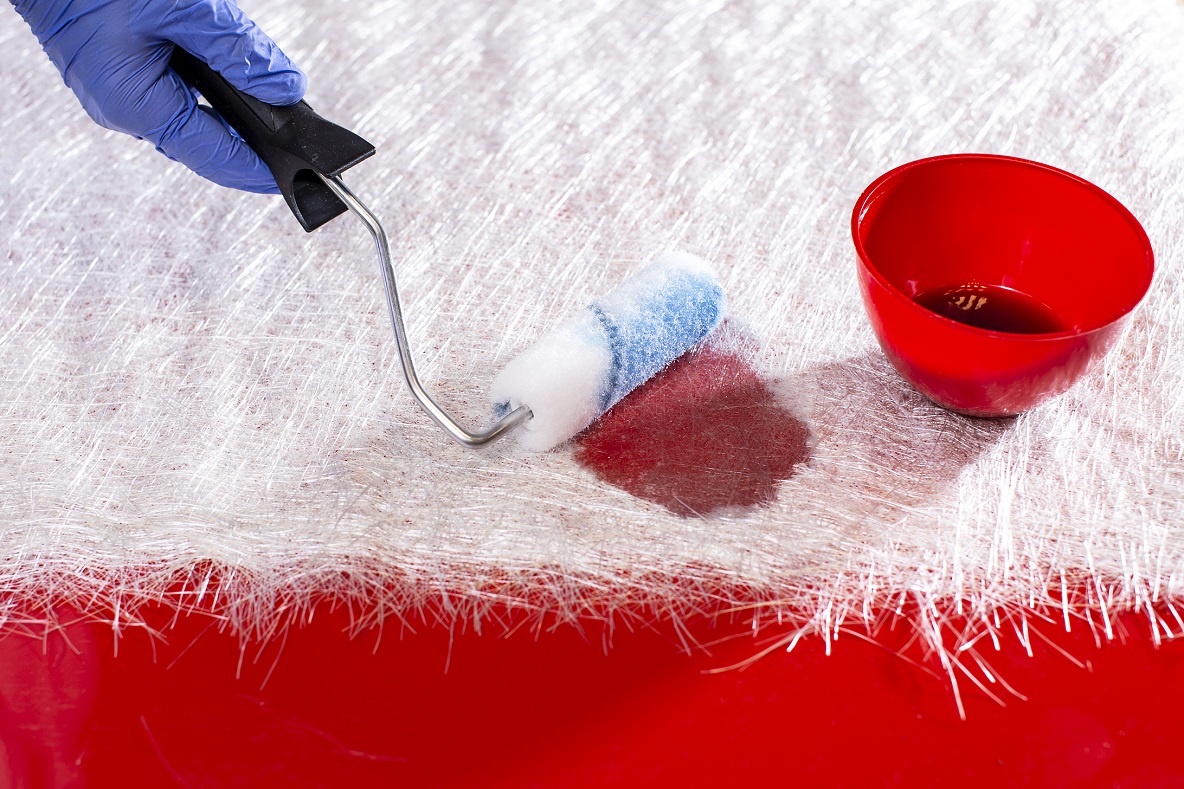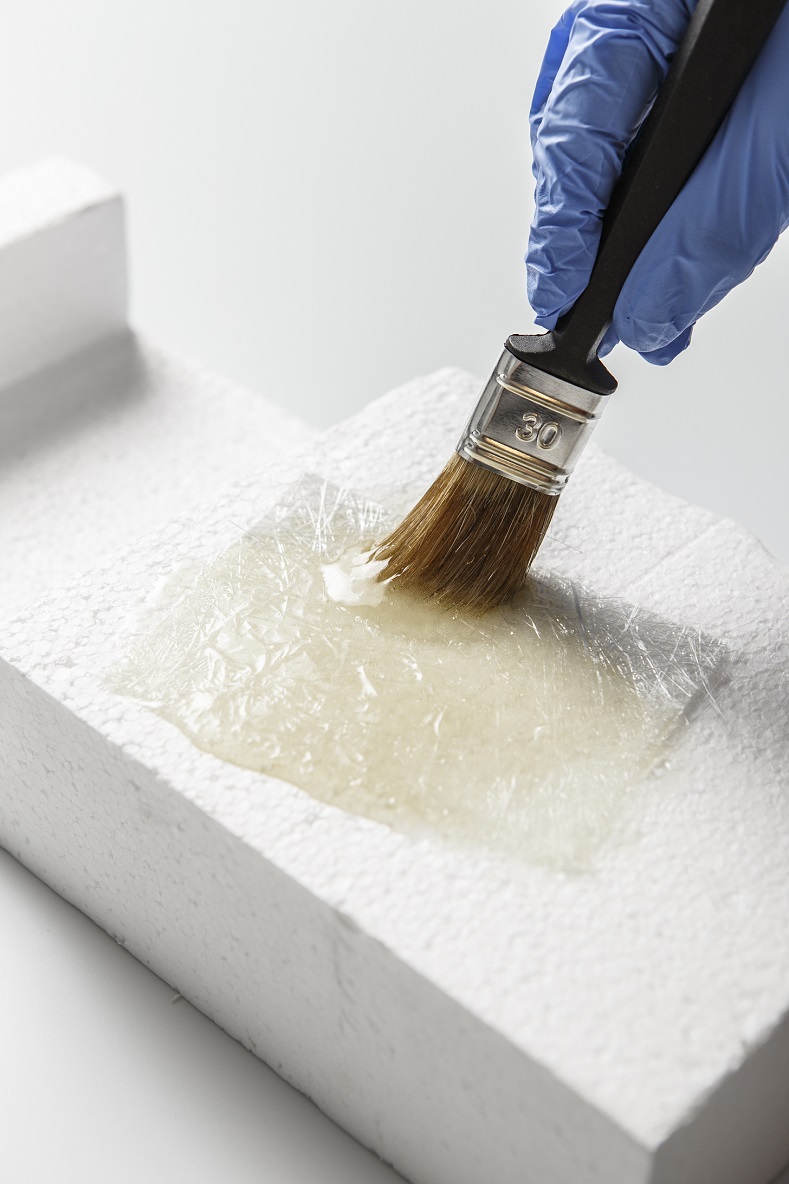Eco resin, odourless laminating resin
New Surester resin from V-Sure
Odourless polyester resin for artists
The classic liquid polyester resin has been around since the 1960s. Over the years, these resins have been improved in terms of quality. For instance, water and chemical resistance, as well as UV resistance, have been adapted and mechanical properties have been addressed. They also tried to reduce the solvent, styrene, but the odour nuisance remained. This made several applications unsuitable because the smell was far too bothersome. For instance, some academies have banned working with polyester and only work with acrylics. But even with these materials, artists experience several disadvantages regarding the strength, waterproofing and durability of their creations.
At V-Sure, we therefore started looking for a way to eliminate the disadvantages of polyester. After much research and development, we managed to find a solution: Eco resin.
This Surester resin is still polyester-based, but it contains no odour-causing substances, making it ideal for working in enclosed spaces. Plus you use exactly the same working method as with a standard resin. In combination with fibreglass, you can make light and extremely strong parts that are water-resistant and last for many years.

What is Surester?
Surester is a liquid odourless laminating resin developed and manufactured by V-Sure. You can compare this resin to a standard polyester resin. This Surester resin contains no solvents and will therefore not emit a nuisance odour during work. It can be processed in combination with all types of glass fibres. Both with emulsion or powder bound glass mat, as well as with all woven fibres, including flax and basalt fibre.
Surester is a 2-component product and is processed with the same hardener as for classic polyester. Add between 1 and 3% of Mekp hardener to the resin to obtain a processing time of about 35-40 min at room temperature. You can use this resin as a standard laminating resin for making sculptures or objects. But you can also use it to repair damaged polyester. For example: car and motorcycle moulds, but also of motor homes or campers. After a few hours, the Surester cures tack-free and you still get adhesion with, for example, a putty or topcoat for finishing. Almost all products will adhere to the hardened Surester.
What do we mean by laminating resin?
You can use Surester resin to impregnate your fibres. By placing several layers on top of each other, you obtain a so-called laminate. With this type of Surester resin, you can place several layers of fibre reinforcement wet-on-wet on top of each other and bleed them all at once with a bleed roller, idem as you would with an ordinary liquid polyester resin. You can also colour this Surester resin with pigments. These pigments can be dyes that are also suitable for polyester or polyurethane. As no solvents are present, you can also work on EPS (expanded polystyrene) so-called Styrofoam, without affecting it. Ideal for companies active in cutting and milling foam and wishing to reinforce it.
What does Surester Eco resin consist of?
A Surester is a polymer composed of ester bonds. This product was developed and produced by the company V-Sure.
Surester forms by a polycondensation reaction of bicarboxylic acid and a diol. Or by a polycondensation of a number of molecules with a carbon as well as an alcohol group.
Surester is a thermoset resin similar to polyester, but without the addition of styrene or any other solvent. Surester resin is usually processed in combination with fibre reinforcement. The most commonly used fibre is glass fibre. So here, too, we can speak of a composite material. Also called fibre-reinforced plastics or GRP.


How do you process this Eco resin?
The processing of this resin type is similar to a standard polyester-based laminating resin. One needs to use the same hardener to initiate polymerisation. The addition of these peroxides are between 1 and a maximum of 3%. The most common technique used to process this resin is the so-called Handlay-up method, also known as hand lamination. Here, the liquid resin is applied to the fibre reinforcement by stamping with a round brush or rolling it out with a coat roller. This impregnates the fibres and once the Surester resin cures, it will ensure that the laminate will reach its strength. Placing several layers of the fibre on top of each other results in a strong yet lightweight material.
Most applications of this system are the manufacture of sculptures and objects including works of art or parts for campers and mobile homes. Decorators also like to work with this type of resin, as it does not contain any solvents that would affect the frequently used EPS foam. In this way, a cut or milled piece of polystyrene foam is strengthened.
Different applications of Eco resin
Process Eco resin as you would have previously worked with a classic polyester. Ideal for repairing plastic parts on campers, mobile homes or bodywork. But also for making garden sculptures or figures in amusement parks. Besides reinforcing with glass fibre, you can also add dye to this resin. This gives you a mass-coloured system, which is extremely weather-resistant and will last for years.
Applications can be found mainly where odour is important. Think, for example, of the seamless waterproofing of an entry shower. This is how you make Gyproc, or other plasterboard, perfectly water-resistant. Thanks to the combination with fibreglass, you appear to be wallpapering, but in addition to reinforcing the substrate, you also make it waterproof. You can finish with several solutions here. Ranging from plain painting, tiling or working with a decorative mineral plaster. Everything is possible thanks to the neutral substrate on which most materials adhere well. You don't even need to apply a primer or prime coat in most cases. So you save time and money.
Working with the Eco resin can also be done directly in a silicone mould. Suppose you have modelled a figure or model in clay and made a mould of it with silicone rubber. Now you can work the Surester resin in this mould without any problems. With or without colour pigments or reinforcement fibres. But also if you add the necessary fillers, such as wood flour or quartz sand. Both give a very natural look.
Discover Surester Eco Resin here
More Info
Feel free to contact us to receive more info about our products.
